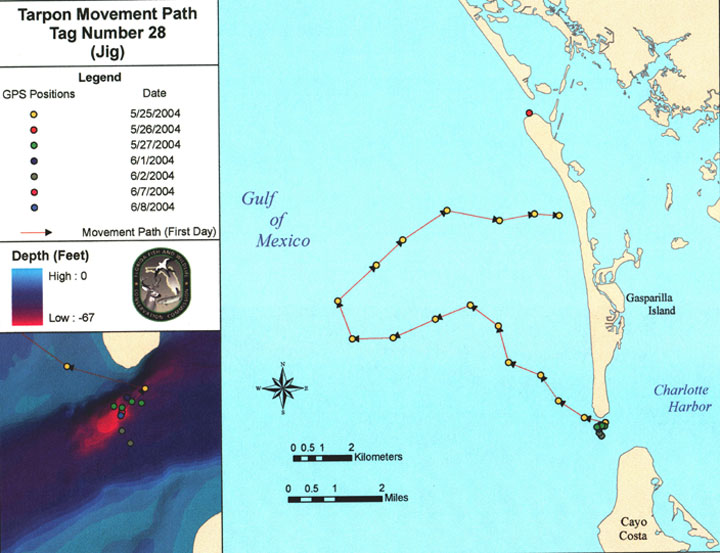|
The attached image
is the tracking map/plot of a tarpon caught on my boat while on a
charter in Boca Grande Pass in 2004. Brian Strajnic caught the fish on
the 25th of May 2004. This fish ate a
4-ounce jig in Boca Grande Pass at 12:41 pm and was landed 20 minutes
later at 1:01 pm, May 25th, 2004. The estimated size
of the fish was 165 lbs and it was caught on 50lb test monofilament. The fish was
tagged and tracked by the Florida Fish and Wildlife Research Institute
during a three-year study on the impacts of catch and release tarpon
fishing in Boca Grande Pass. Scientists used ultrasonic telemetry
methodology in tracking the released fish. A tarpon was caught and an
ultrasonic tag was placed in the muscle area near the tarpon's dorsal
fin. The fish were then followed for up to six hours in a research
boat rigged with a directional hydrophone. The long yellow "dot" plot is the track of the tarpon after the scientists tagged the fish and I subsequently released the fish in Boca Grande Pass on May 25th, 2004. After six hours, the scientist left the fish as their tracking time had ceased. On the following day of May 26th, 2004, the fish was heard again in the next pass to the north of Boca Grande Pass, known as Little Gasparilla Pass. On the third day (May 27th, 2004) the fish was heard again, this time back in Boca Grande Pass! Researchers heard the fish for the last time on June 8th, 2004 or 14 days after the fish had been initially caught, tagged and released. The 3-year, $250,000 state study concluded:
|
